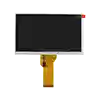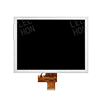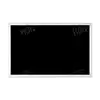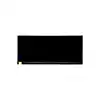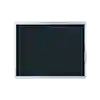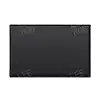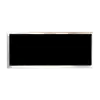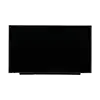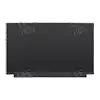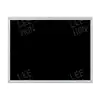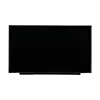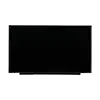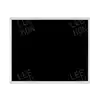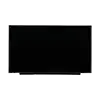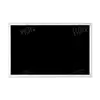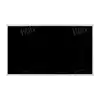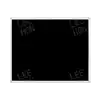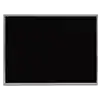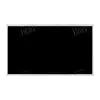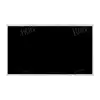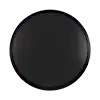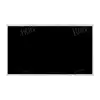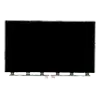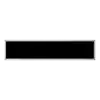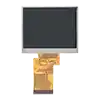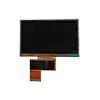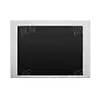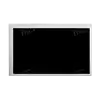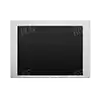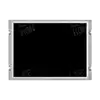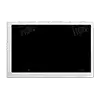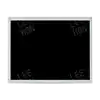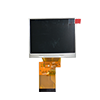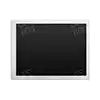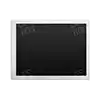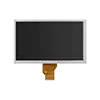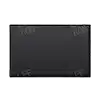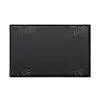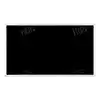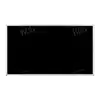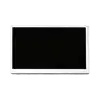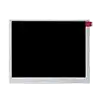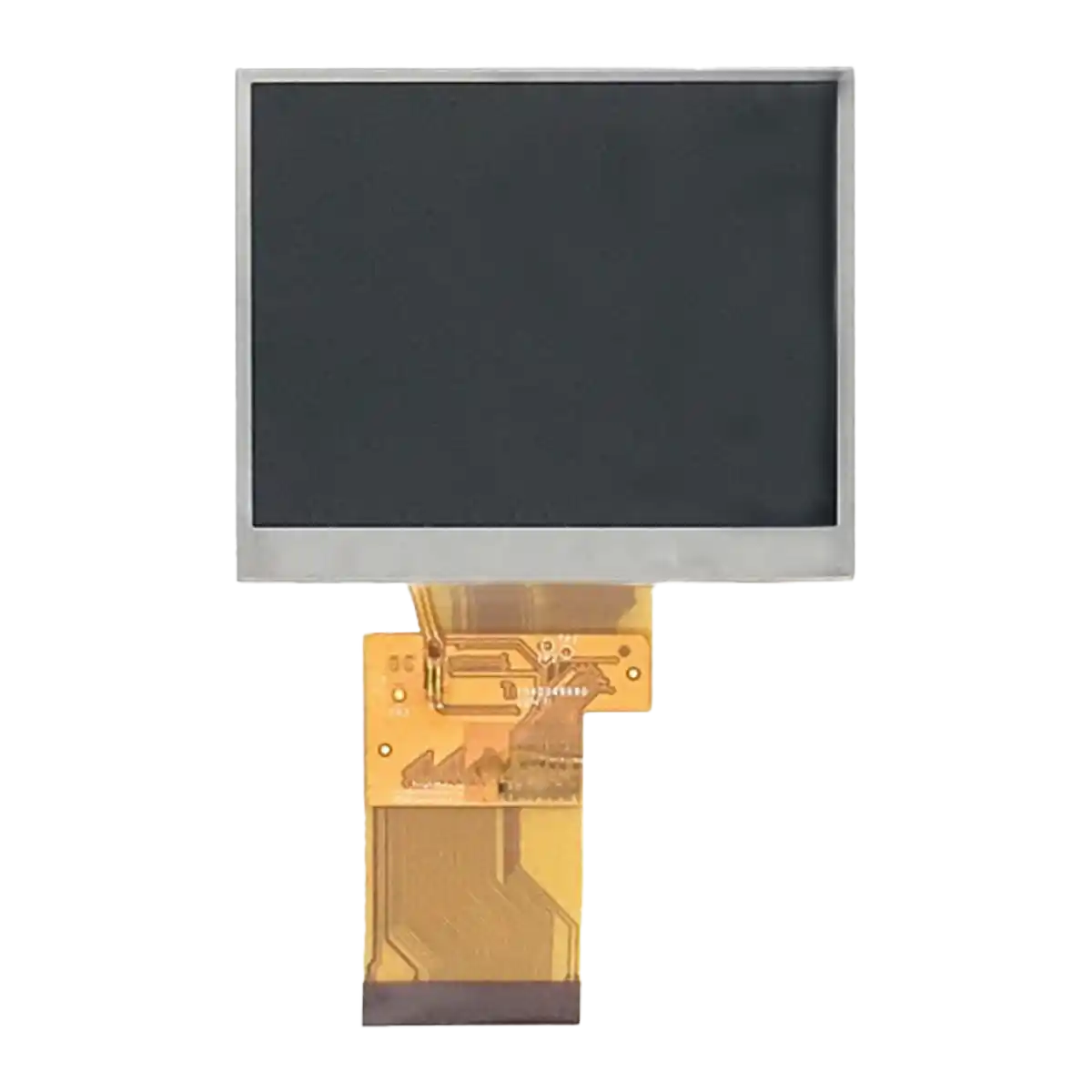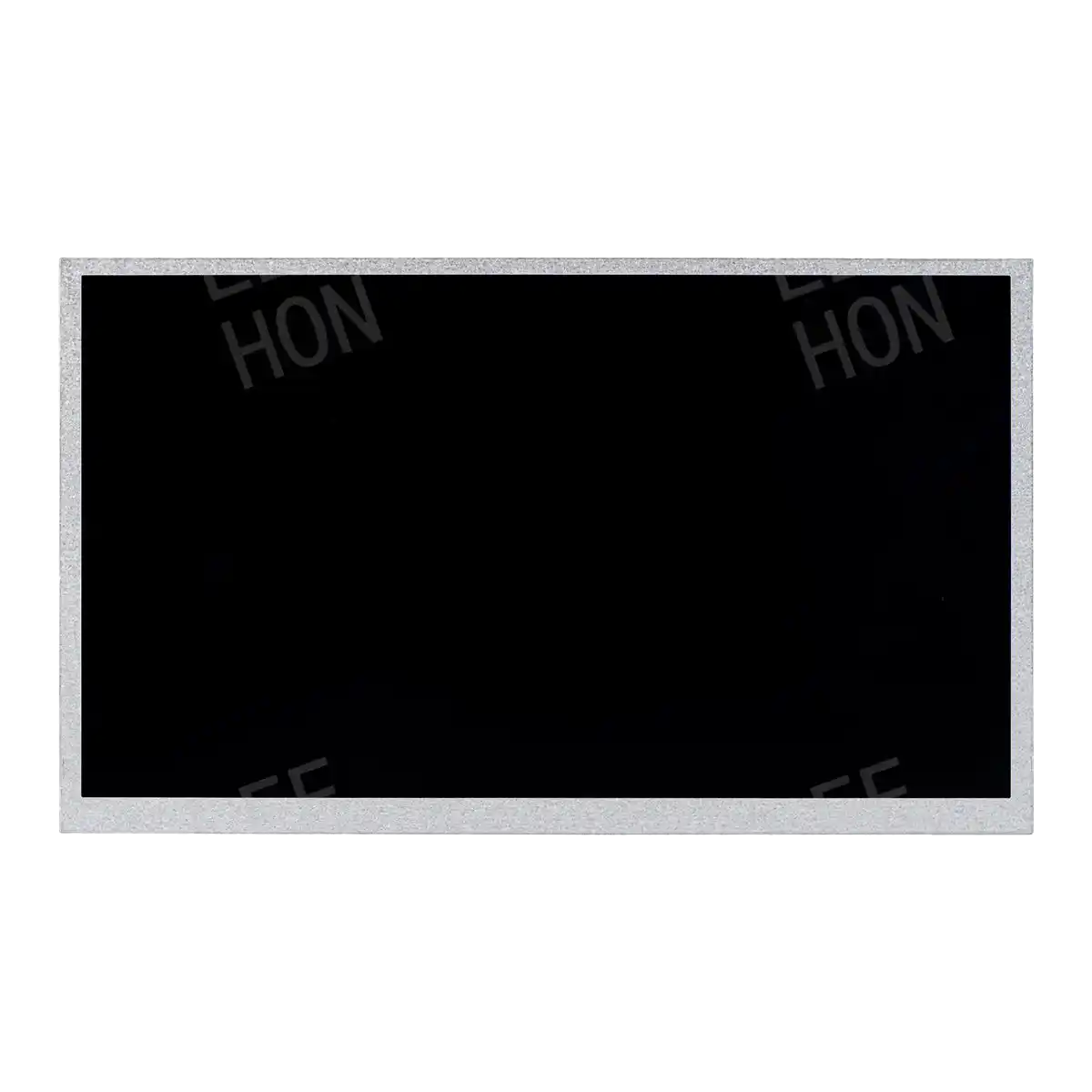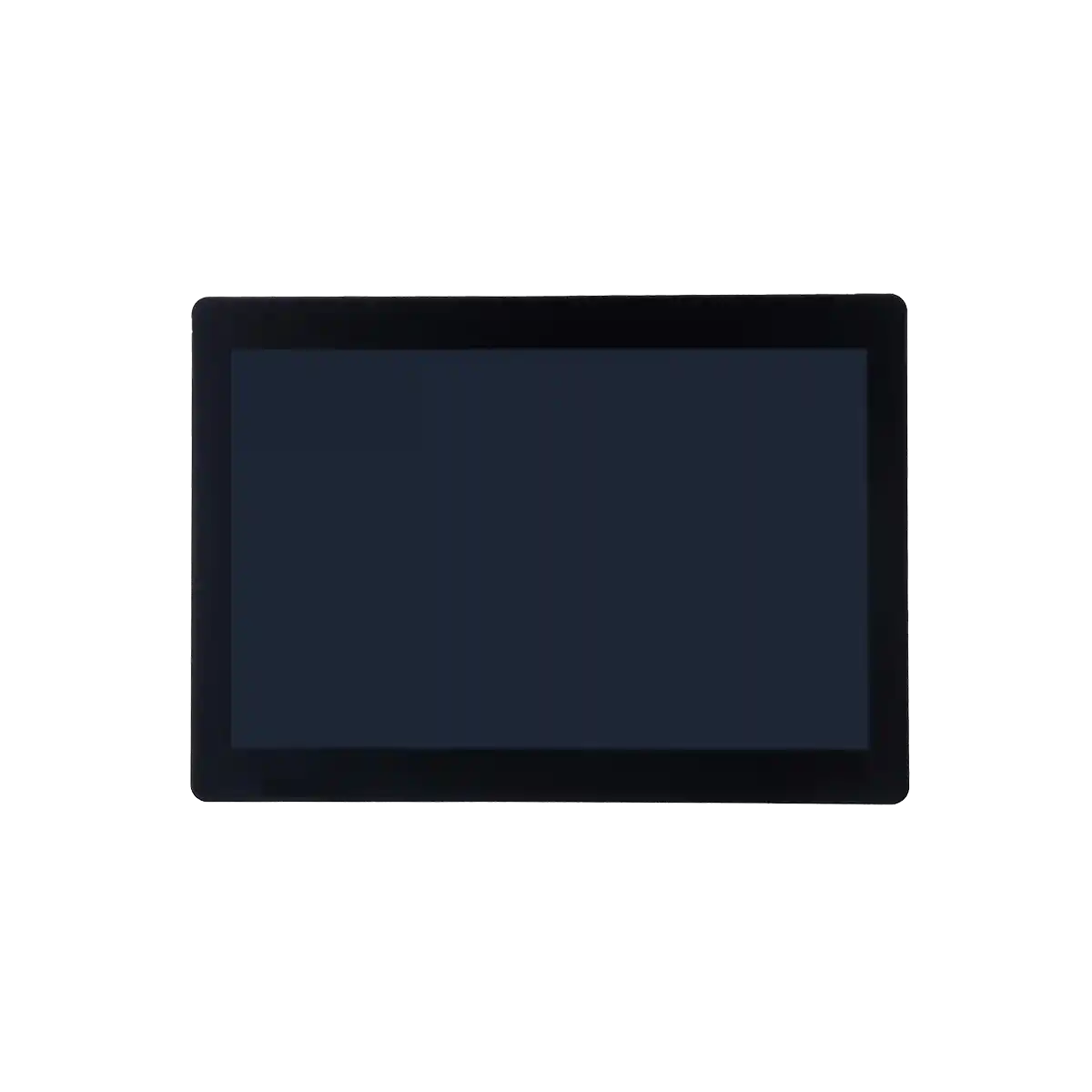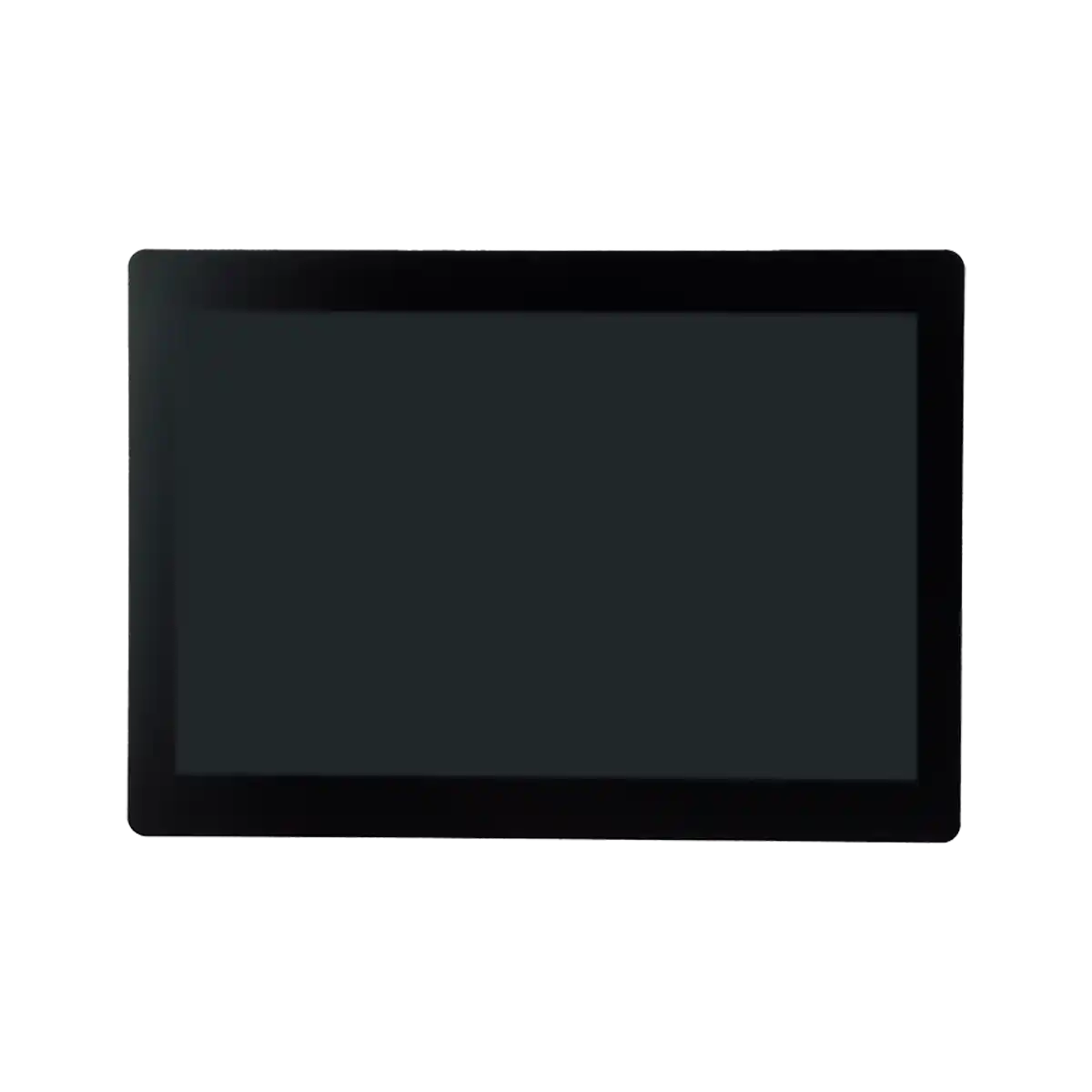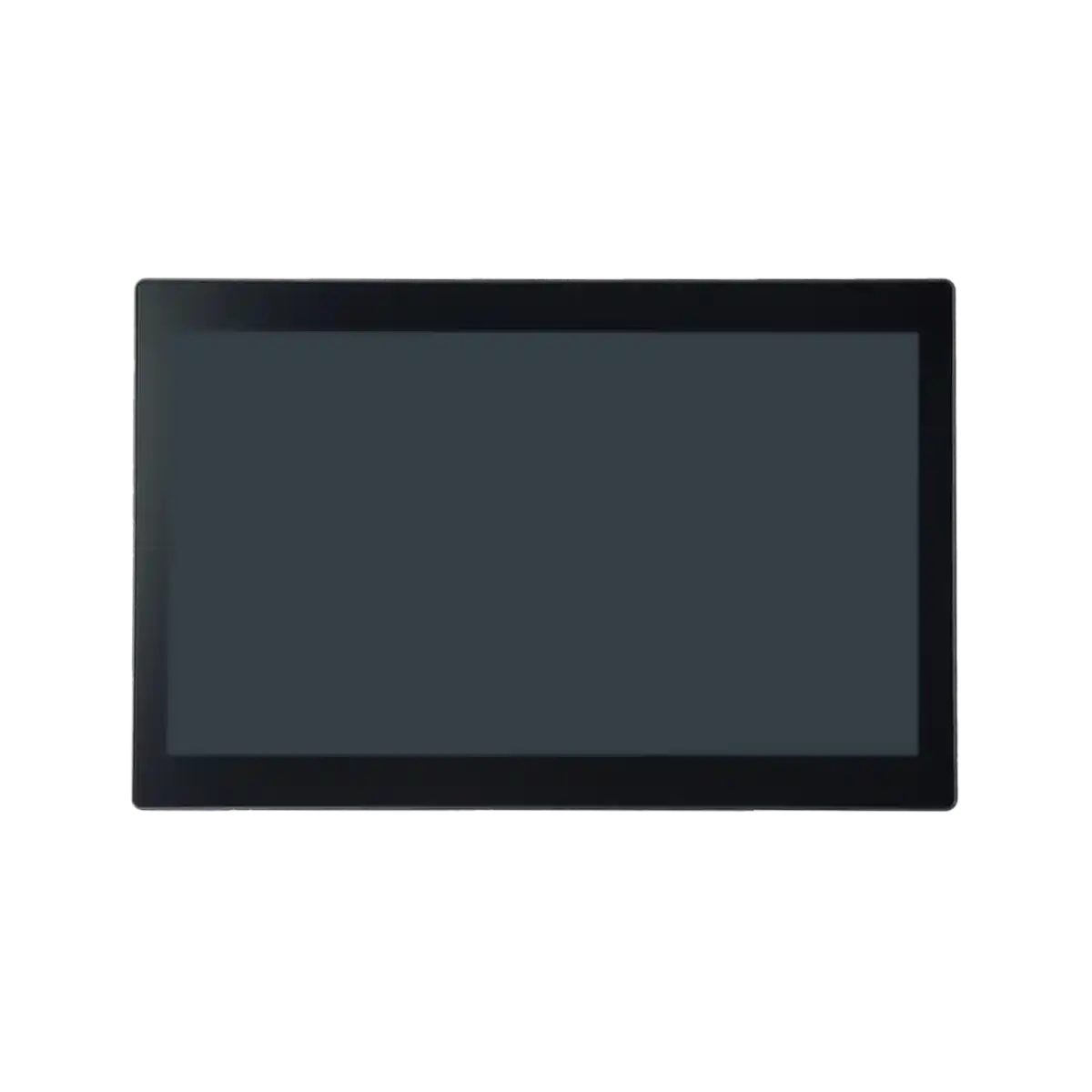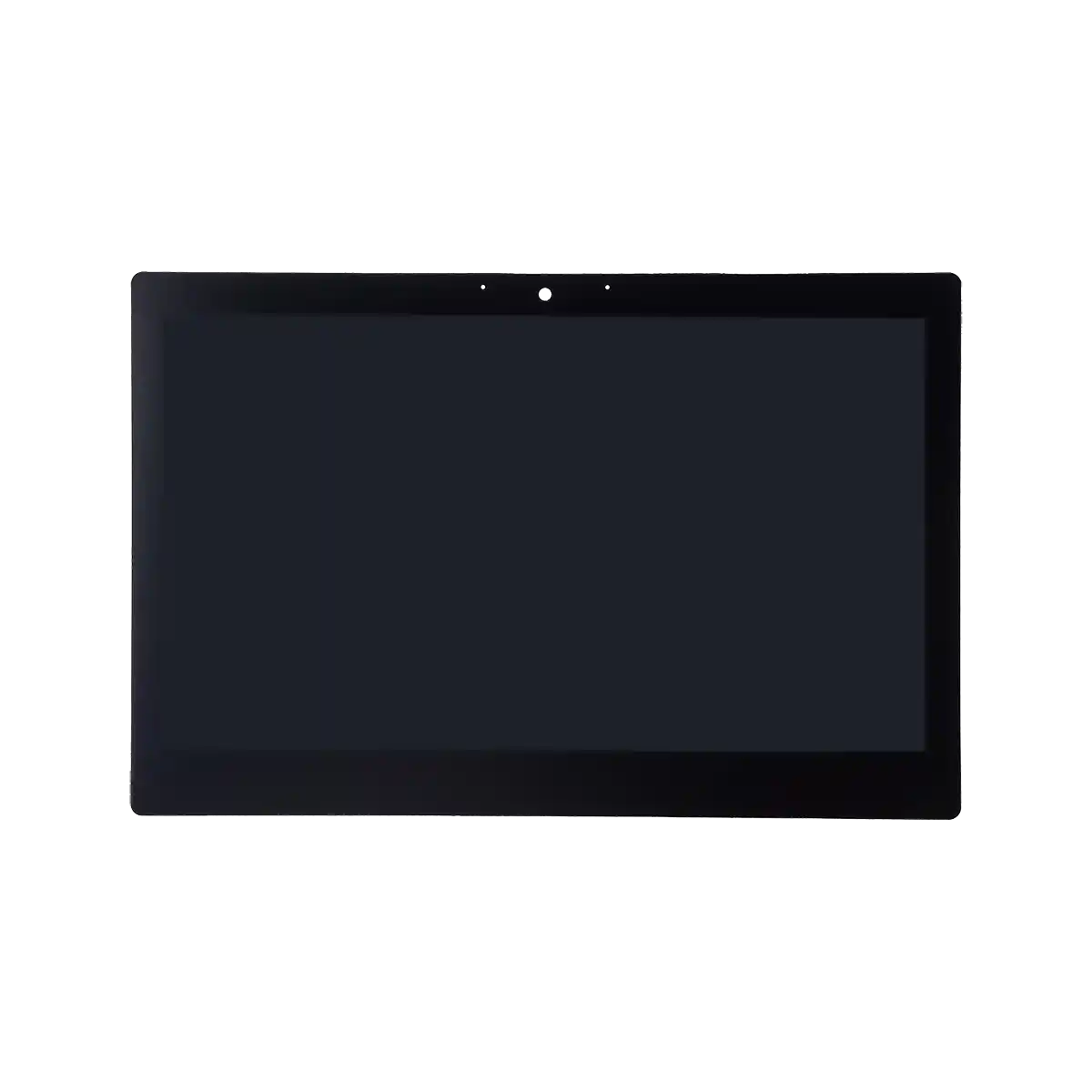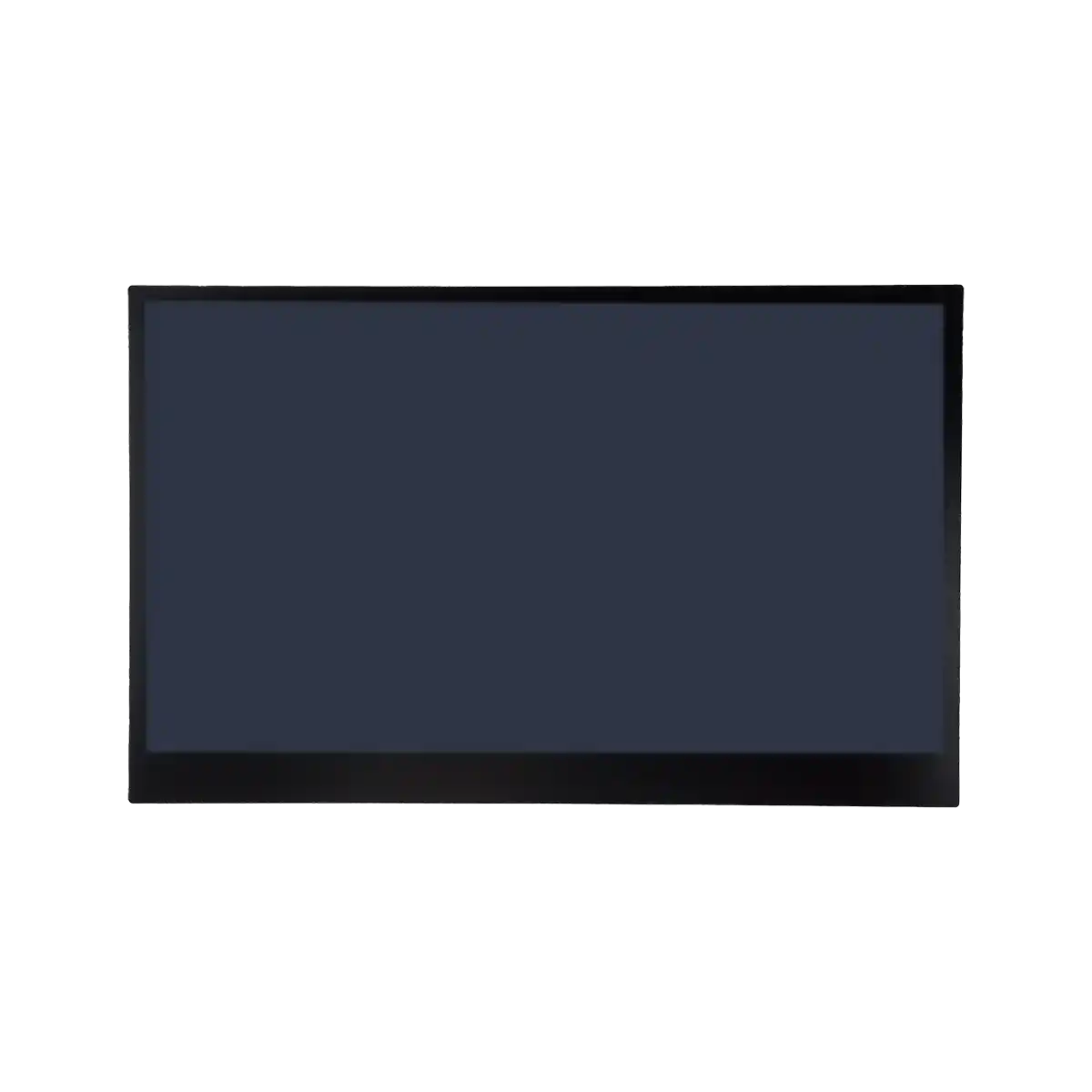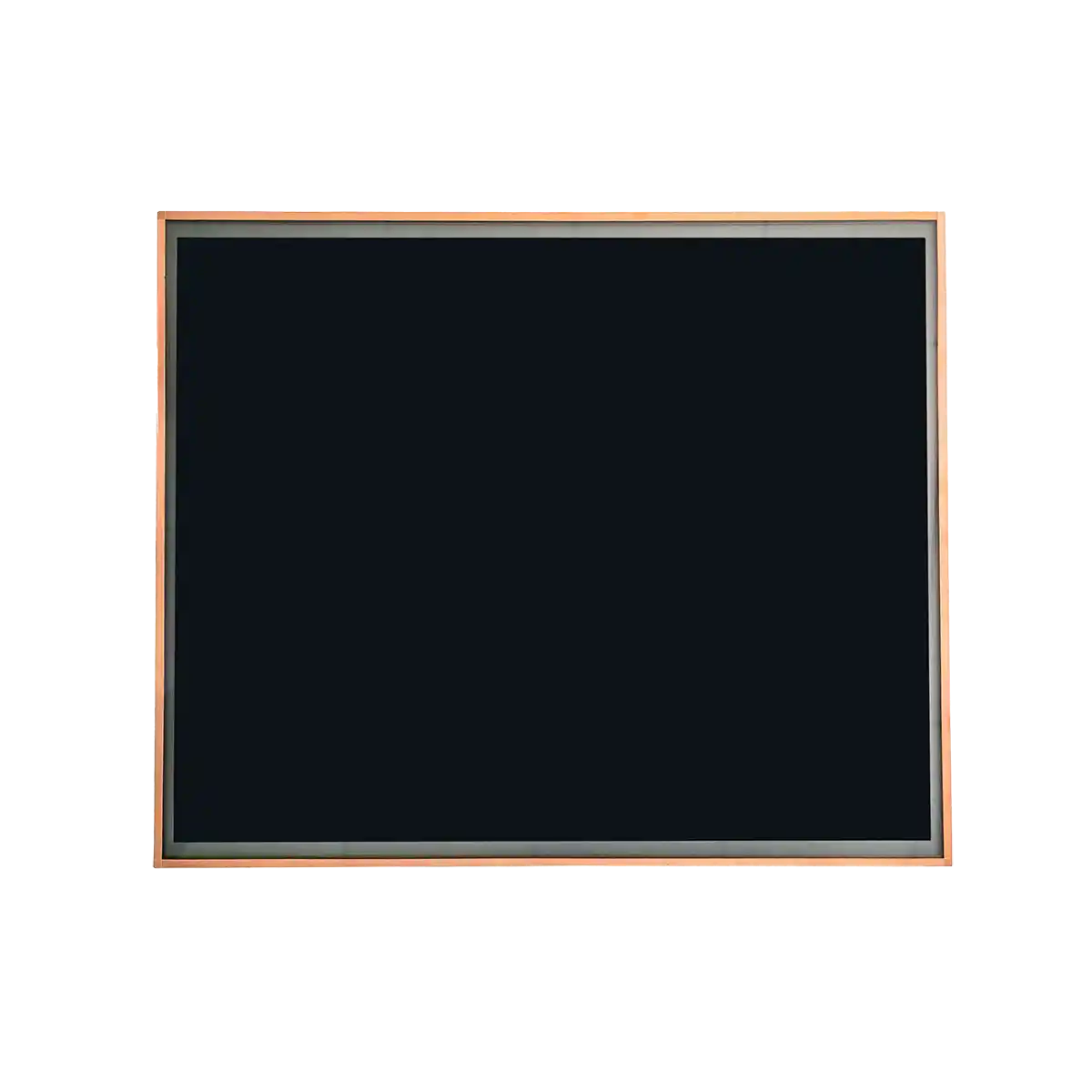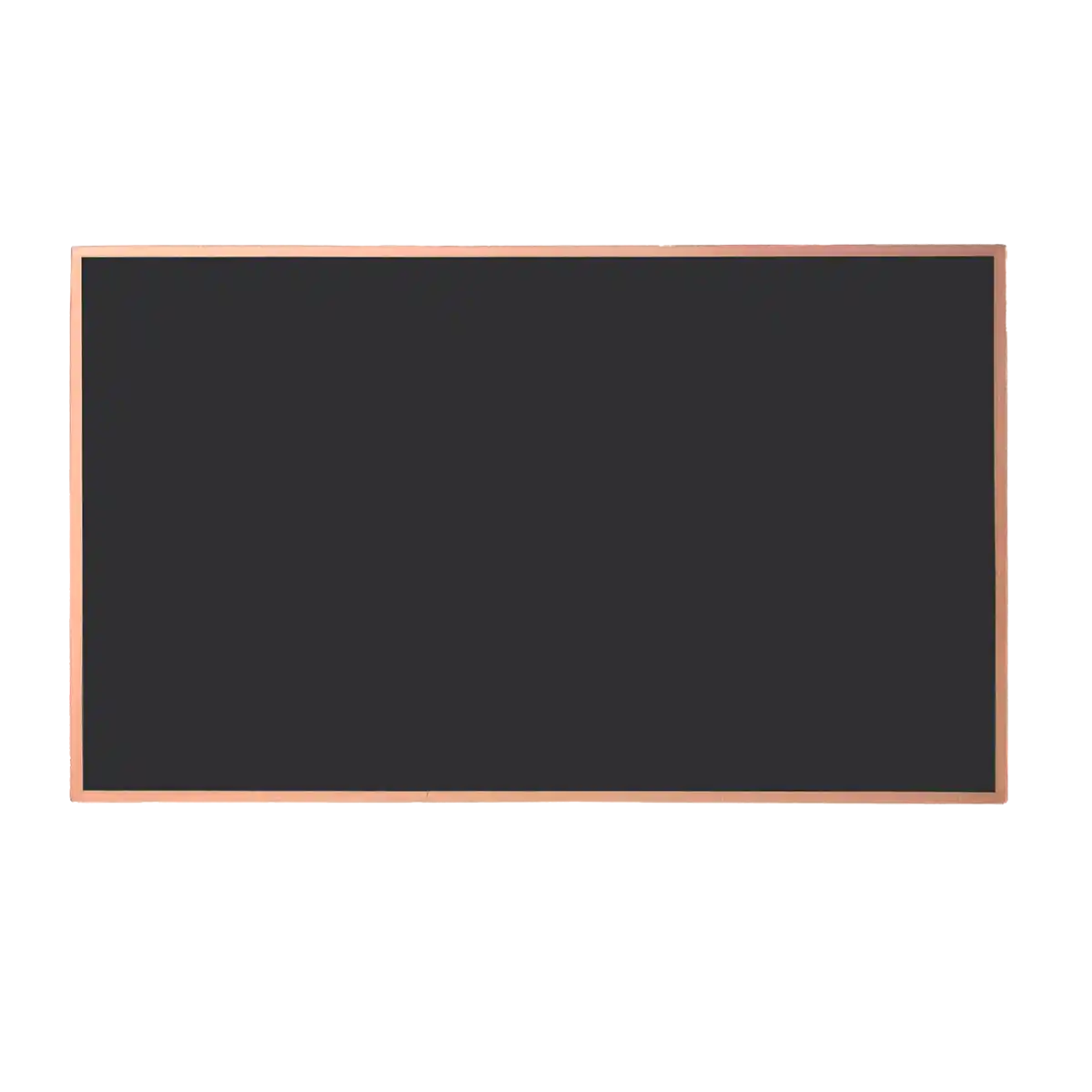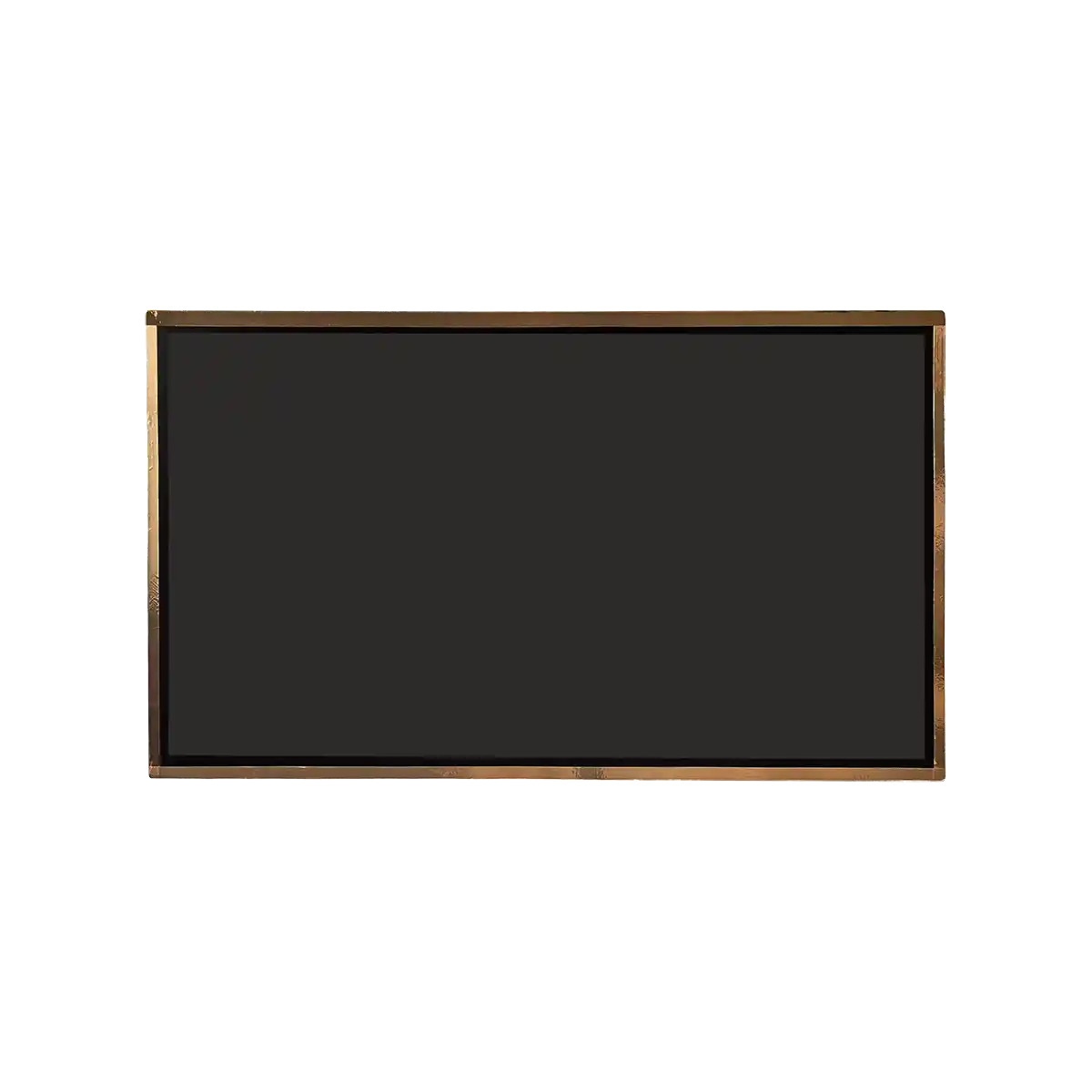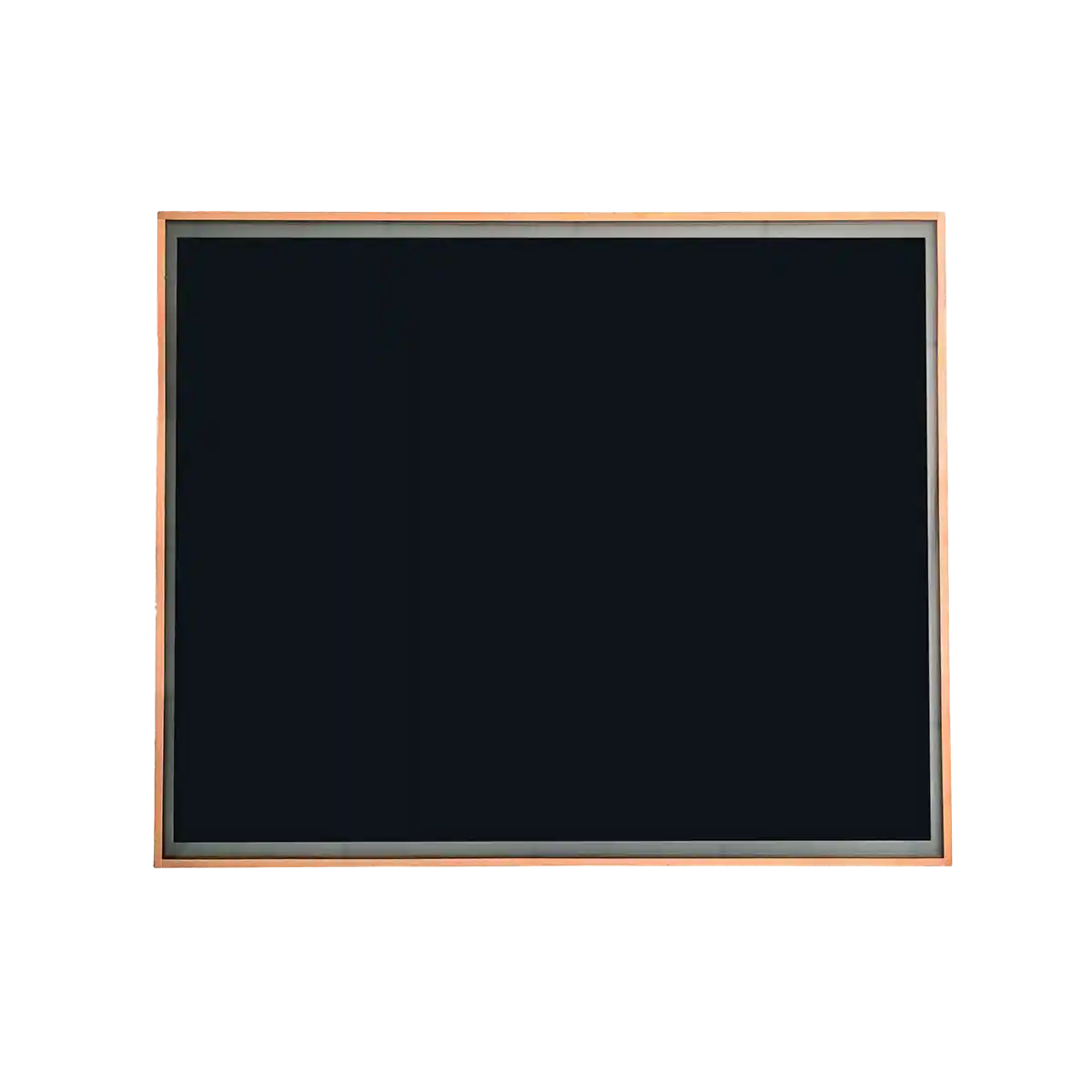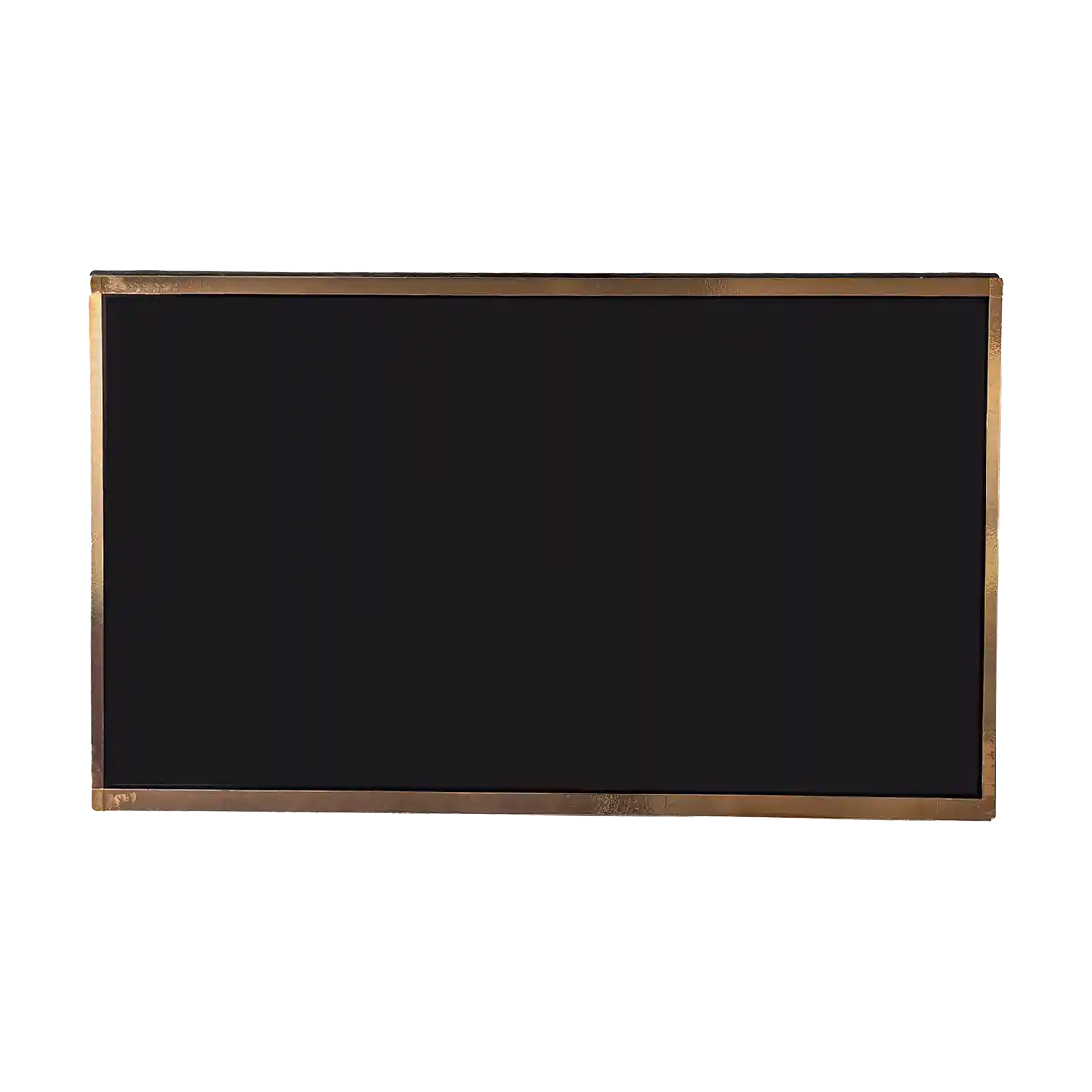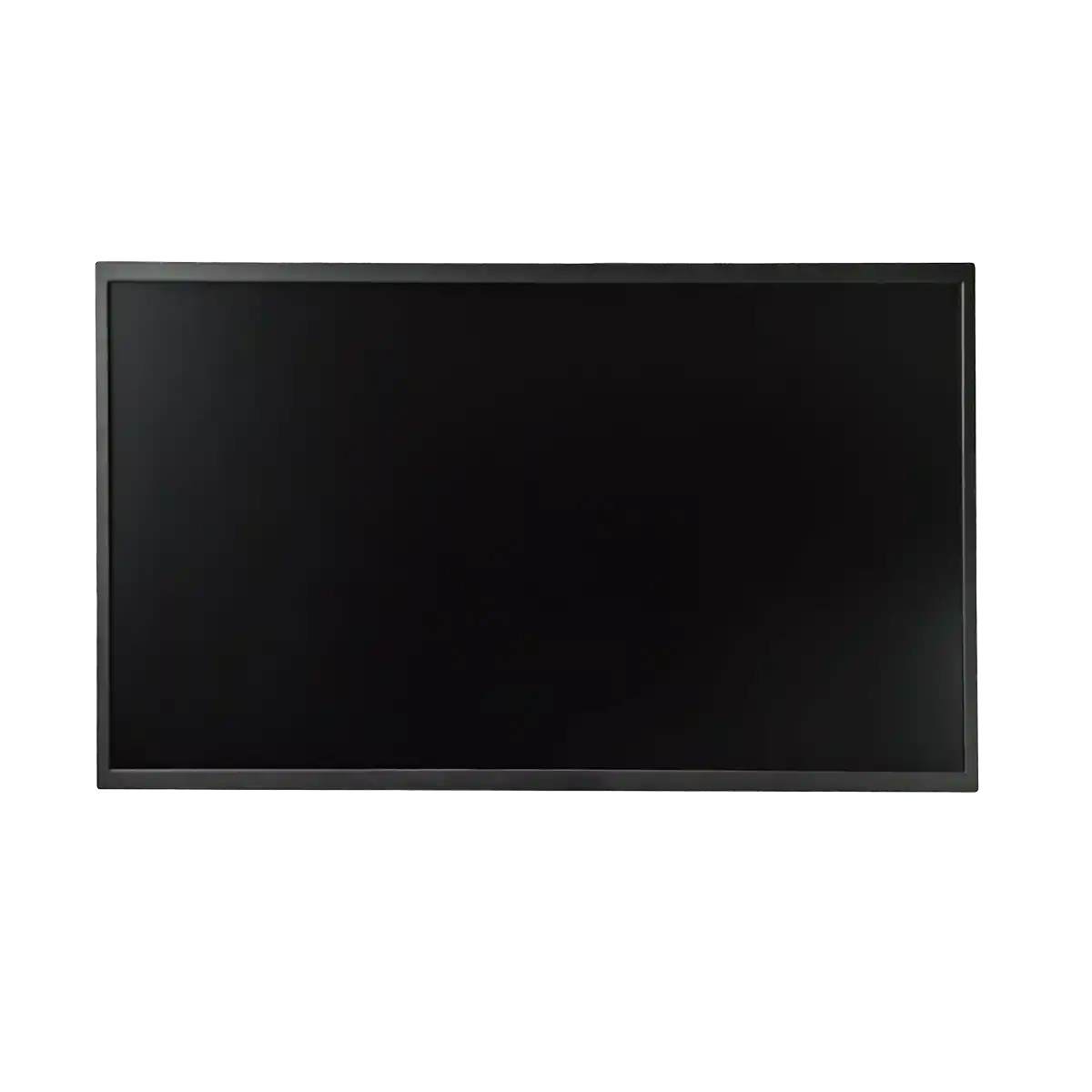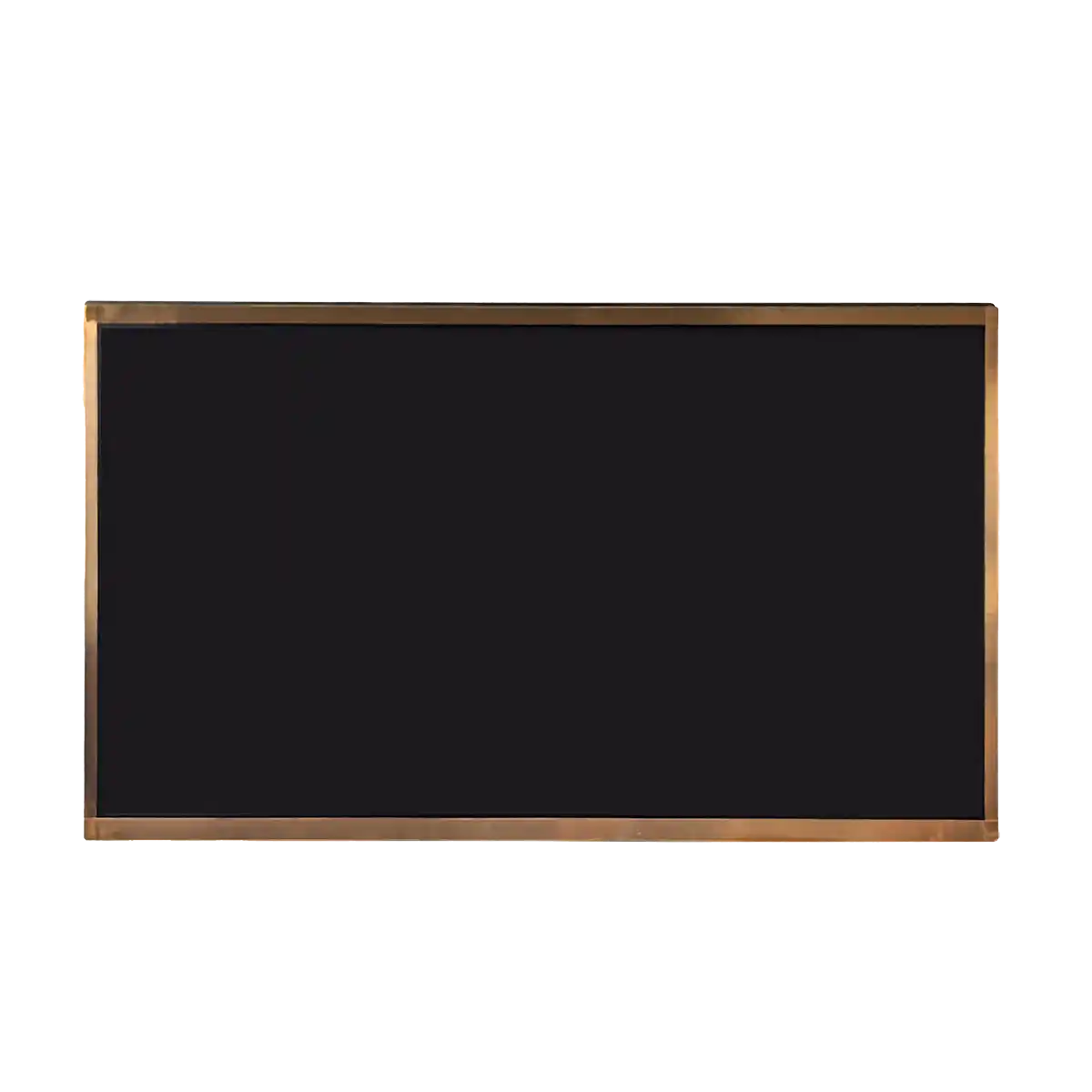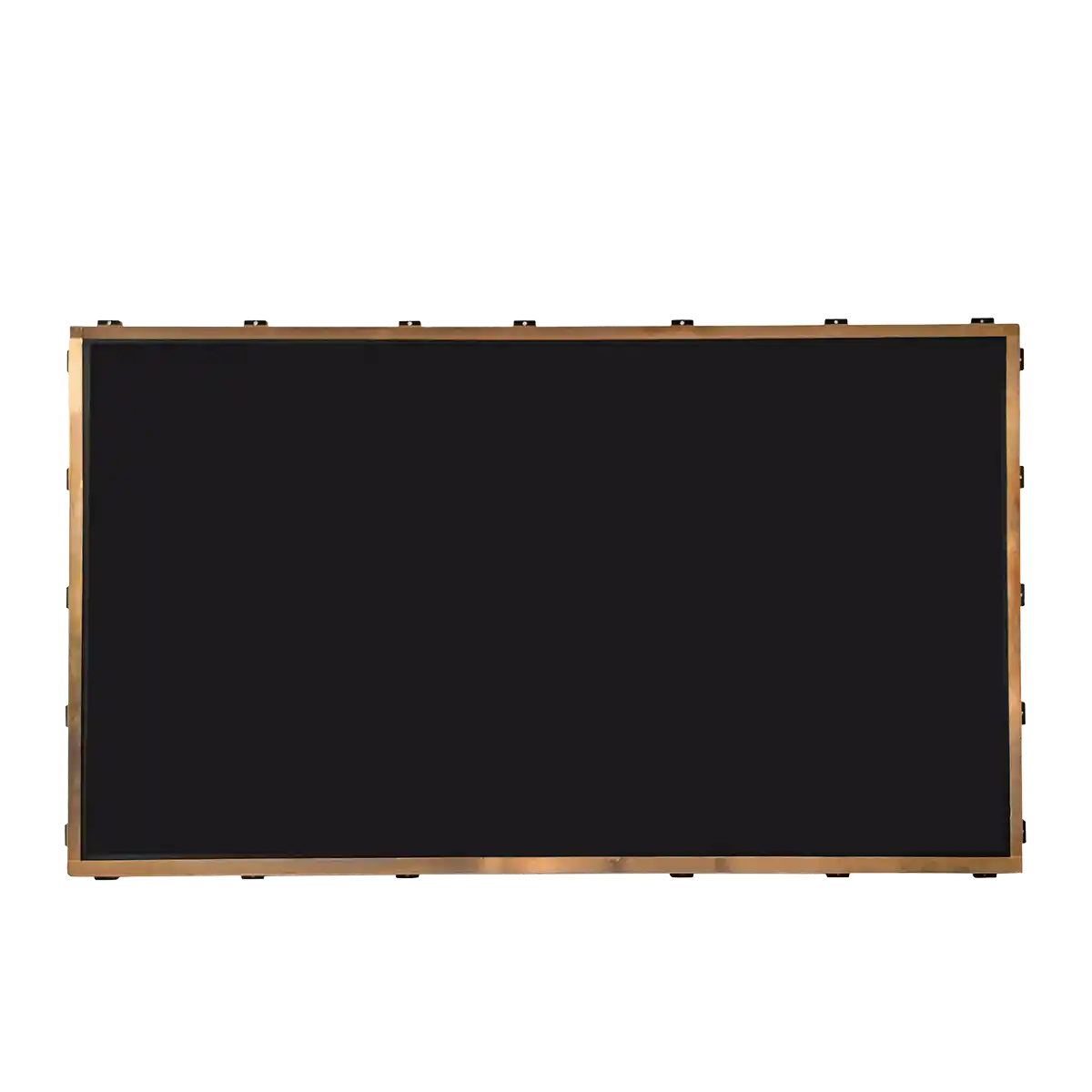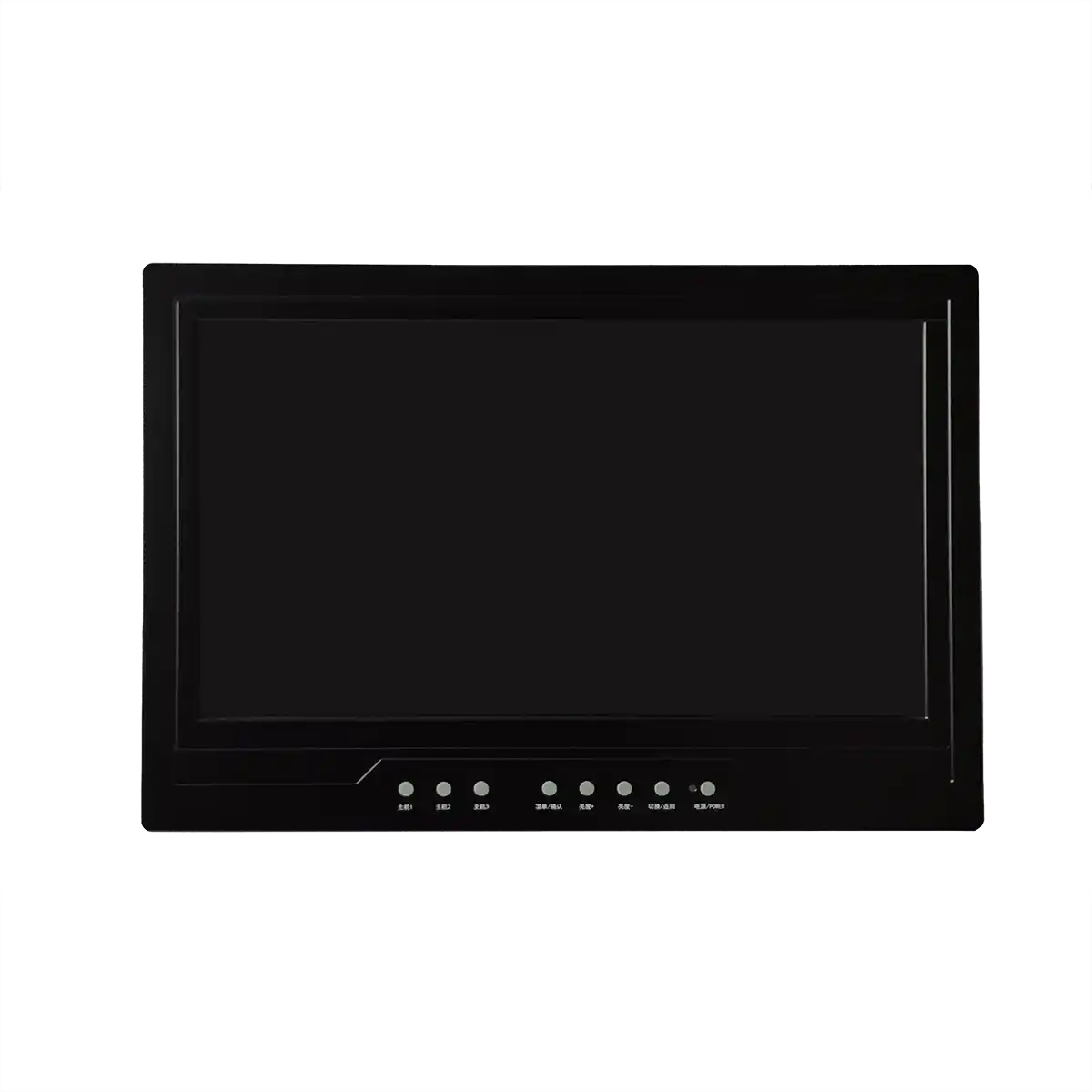Optimizing Rail Transit Cockpit Display Selection: A Technical Guide to High-Performance LCD Solutions
1. Executive Summary
The demanding operating environment of rail transit cockpits presents unique challenges for display systems. These environments often feature extreme temperature fluctuations, continuous vibrations, potential impacts, complex electromagnetic interference, and a high demand for clear display of critical information. Therefore, selecting reliable, high-performance displays is crucial for ensuring driving safety and enhancing operational efficiency. This report aims to provide an in-depth analysis of the selection requirements for rail transit cockpit displays, with a particular focus on evaluating the suitability of the Kyocera TCG121XGLPBPNN-AN40 model for such applications. Given the client's interest in this model, the report will conduct a detailed technical review and compare it with other mainstream 12.1-inch XGA industrial-grade LCDs on the market, while also discussing the importance of industry standards such as EN50155.
The TCG121XGLPBPNN-AN40, with its high brightness and wide operating temperature range, demonstrates the potential to meet the stringent demands of rail transit. However, display selection is not merely a comparison of specifications; it involves a thorough understanding of long-term reliability, supplier support, and complex industry certifications like EN50155 and its referenced standards IEC 61373 and EN50121-3-2. These factors collectively influence the total cost of ownership (TCO) and operational safety of the display system. This report's analysis indicates that the TCG121XGLPBPNN-AN40 performs exceptionally well in key performance indicators. Concurrently, other competitive products exist in the market, such as solutions offered by brands like BOE (BOE). Hangzhou LEEHON Technology Co., Ltd. (LEEHON), as a professional display solutions provider, can offer comprehensive selection guidance and value-added services through its extensive product line (including its agency for BOE products) and professional technical support. Ultimately, users are advised to adopt a comprehensive evaluation approach based on specific application scenario requirements, certification demands, and the overall capabilities of the supplier to select the most suitable display solution.
2. Key Performance Requirements for Rail Transit Cockpit Displays
2.1. The Harsh Rail Transit Environment: Operational Demands
The operational environment of rail transit places extremely high demands on electronic equipment, especially cockpit displays. These devices must be able to withstand continuous mechanical vibrations and potential severe shocks, adapt to a wide range of ambient temperatures from extreme heat to severe cold, resist erosion from airborne dust and moisture, and operate stably in complex electromagnetic environments generated by traction systems, signaling equipment, and communication devices. Therefore, displays used in rail transit cockpits not only need to meet "industrial grade" standards but should also possess "rail transit certification" or have sufficient evidence to demonstrate their ability to meet or even exceed relevant rail transit industry specifications. For example, the EN50155 standard has clear provisions for equipment vibration, shock, and operating temperature (e.g., some systems require -25°C to +40°C). The stricter EN50155 OT4+ST1 temperature class requires equipment to operate normally in an environment of -40°C to +70°C and to operate for a short period (10 minutes) at +85°C. Furthermore, considering that rail transit systems typically require uninterrupted, all-weather operation for decades (e.g., some standards mention rolling stock equipment needs to meet 24/7 operation for 30 years, approximately 250,000 hours ), this places an extreme test on the long-term reliability and durability of displays.** **
2.2. Key Technical Specifications and Standards
2.2.1. Brightness and Sunlight Readability
In the variable lighting conditions of a cockpit, especially under direct sunlight, the display must maintain clear readability, which is crucial for ensuring the driver accurately acquires information. High brightness (measured in cd**/m2** or nits) is the core indicator for achieving sunlight readability; typically, for direct sunlight environments, the brightness requirement may exceed 1000 cd**/m2**. The Kyocera TCG121XGLPBPNN-AN40 has a brightness of up to 1200 cd**/m2**, while some EN50155 compliant panel PCs like the Advantech ITA-8100B also offer a 1300 nits option , and Litemax's SSD2845-E reaches 1000 nits. Additionally, anti-glare (AG) and anti-reflective (AR) surface treatment technologies, such as the anti-glare treatment used in the TCG121XGLPBPNN-AN40 , can effectively reduce light reflection, further enhancing the visual experience and accuracy of information reading. High brightness is fundamental for sunlight readability but not the sole factor. The display's contrast ratio, surface treatment, and viewing angle stability also play critical roles in high ambient light conditions. For instance, the TCG121XGLPBPNN-AN40 boasts 1200 cd**/m2** high brightness and an anti-glare coating , while the Axiomtek P6105, though with a brightness of 500 nits, claims good outdoor visibility due to its 1000:1 high contrast ratio and "sunlight readable" technology. This implies that when evaluating sunlight readability, a comprehensive consideration of the synergistic effects of these optical parameters is necessary, rather than merely pursuing the maximization of a single brightness value.** **
2.2.2. Wide Operating and Storage Temperature Range
Rail trains operate across diverse geographical regions and may experience extreme climates ranging from severe cold to intense heat. Therefore, cockpit displays must possess a wide operating temperature range to ensure stable operation without performance degradation or damage under various climatic conditions. For example, the EN50155 standard defines different temperature classes, with the OT4 class requiring equipment to operate in an ambient temperature range of -40°C to +70°C, and for a short period of 10 minutes at +85°C. The Kyocera TCG121XGLPBPNN-AN40 has an operating temperature range of -30°C to +80°C and a storage temperature range of -30°C to +80°C as well. This specification surpasses many typical rail transport requirements, providing the system with a good temperature adaptation margin. BOE's outdoor display products also support an operating temperature of -20°C to +70°C and a storage temperature of -30°C to +80°C.
2.2.3. Mechanical Durability: Shock and Vibration Resistance (EN50155, IEC 61373)
During operation, railway vehicles continuously generate vibrations and may encounter shocks. Display equipment in the cockpit must be able to withstand these mechanical stresses, maintaining structural integrity and functional stability. EN50155 is a comprehensive standard for the environmental adaptability (including vibration and shock) of electronic equipment on railway vehicles. This standard typically references IEC 61373 ("Railway applications – Rolling stock equipment – Shock and vibration tests") as the specific test method and judgment basis. IEC 61373 classifies equipment into different categories and classes based on its installation location on the vehicle (e.g., body-mounted, bogie-mounted, or axle-mounted) and specifies corresponding vibration spectrum and shock test requirements. For cockpit displays, which are usually mounted on the vehicle body, they generally need to meet the requirements of Category 1 Class A (directly mounted on or under the vehicle body) or Class B (mounted inside an equipment box, which is then mounted on or under the vehicle body). This means the display needs a robust mechanical structure design and reliable mounting methods, such as the side mounting holes (6-M3) provided by the TCG121XGLPBPNN-AN40. BOE's EV121X0M-N10 model also indicates its vibration resistance as 1.5G (14.7m**/s2**). It is important to note that EN50155 itself is a framework standard, and its requirements for vibration and shock specifically refer to IEC 61373. IEC 61373 is further subdivided into different installation categories (Category 1, 2, 3) and sub-categories (e.g., Category 1 Class A, Class B), each with different test conditions (such as vibration frequency range, power spectral density, shock acceleration, and duration). Therefore, merely claiming "compliance with EN50155" is insufficient; the key is whether it has passed the IEC 61373 tests for the specific installation location (e.g., body-mounted in the cockpit). For a panel like the TCG121XGLPBPNN-AN40 itself, detailed IEC 61373 compliance information may need to be obtained through the system integrator during the certification of the complete unit.** **
2.2.4. Electromagnetic Compatibility (EMC) (EN50155, EN50121-3-2)
The electromagnetic environment inside a train is extremely complex, filled with electromagnetic interference from various sources such as traction systems, auxiliary power supplies, signal control, and wireless communication equipment. As a key component of the human-machine interface in the cockpit, the display's own electromagnetic compatibility (EMC) is crucial. The EN50155 standard mandates that railway electronic equipment must comply with EMC regulations and usually points to the EN 50121 series of standards. Among them, EN 50121-3-2 ("Railway applications – Electromagnetic compatibility – Part 3-2: Rolling stock – Apparatus") is the EMC standard specifically for electronic equipment installed on vehicles, covering the emission and immunity requirements of the equipment in a frequency range up to 400 GHz. EMC testing mainly includes two aspects: first, electromagnetic emission testing, to ensure that the electromagnetic interference generated by the display does not interfere with the normal operation of other sensitive equipment on the train; second, electromagnetic immunity testing, to ensure that the display can resist external interference and maintain stable operation in the expected electromagnetic environment, which includes immunity to electrostatic discharge (ESD), electrical fast transients/bursts (EFT), surges, and radiated radio-frequency fields. Similar to mechanical durability, EN50121-3-2 details the limits and methods for various EMC tests. The display panel itself usually does not undergo complete EN50121-3-2 certification independently but is tested and certified as part of the final HMI (Human Machine Interface) system by the system integrator.** **
2.2.5. Long-Term Reliability: Backlight Lifetime and System MTBF
Railway equipment is expected to have an extremely long service life, placing high demands on the long-term reliability of displays. The backlight system is one of the key components of an LCD, and its lifespan directly affects the display's service life and maintenance costs. The use of WLED (White Light Emitting Diode) backlights has become mainstream, with lifespans typically expected to exceed 50,000 hours, and high-performance models reaching 70,000 to 100,000 hours. The Kyocera TCG121XGLPBPNN-AN40 has a typical WLED backlight lifespan of 70,000 hours , a Litemax display also claims a backlight MTBF of 70,000 hours , and the Tianma P1210XGF1MA00 even reaches 100,000 hours. The BOE EV121X0M-N10 has a backlight lifespan of 50,000 hours (minimum). In addition to backlight lifetime, the Mean Time Between Failures (MTBF) of the entire display system is a more comprehensive measure of reliability. Systems compliant with EN50155 typically have high MTBF targets; for example, a railway HMI from HaslerRail claims an MTBF of over 150,000 hours. It is necessary to distinguish that backlight lifetime is a reliability indicator for a single component, while system MTBF covers the entire display unit, including driver boards, power supplies, connectors, etc. The documentation for TCG121XGLPBPNN-AN40 specifies its backlight lifetime but does not provide the MTBF for the entire panel module. This indicates that while its core component has a long lifespan, achieving the high system-level MTBF required for railway applications also depends on high-quality system integration, incorporating this panel into a complete display unit with power management, signal processing, and a rugged enclosure, and then conducting an overall reliability assessment or testing of that unit.** **
2.2.6. Optical Performance: Viewing Angle, Contrast Ratio, Resolution, and Color Accuracy
The optical performance of cockpit displays directly relates to the readability of information and the visual comfort of the driver.
- Wide Viewing Angle: Crucial for scenarios where multiple crew members may observe simultaneously or where the driver needs to read information from different postures. It typically requires clear visibility at wide angles (e.g., 80 degrees horizontally/vertically or wider, under CR≥10 conditions). The Kyocera TCG121XGLPBPNN-AN40 uses AWV (Advanced Wide View) technology to provide wide viewing angles of +/-85° both horizontally and vertically. Other panels using IPS or similar wide-viewing-angle technologies (such as the 178/178° viewing angle of the BYTEM-123-PC ) can also offer excellent off-axis viewing effects.** **
- High Contrast Ratio: Helps distinguish colors and grayscale levels, especially in high ambient light. A contrast ratio greater than 700:1 is generally expected. The TCG121XGLPBPNN-AN40 has a contrast ratio of 750:1.
- Appropriate Resolution: For a 12.1-inch cockpit display, XGA (1024x768 pixels) resolution is a common choice, providing sufficient display detail for human-machine interfaces.
- Color Performance: Sufficient color depth (e.g., 262K colors or 16.2M colors) and color saturation (e.g., NTSC color gamut percentage) ensure accurate presentation of information, such as identifying alarm levels or system status through different colors. The TCG121XGLPBPNN-AN40 supports 262K/16.2M colors with an NTSC color gamut of 51%.
3. Focus on Kyocera TCG121XGLPBPNN-AN40: A Robust Choice for Demanding Applications
3.1. Comprehensive Specification Review
The Kyocera TCG121XGLPBPNN-AN40 is a 12.1-inch a-Si TFT-LCD display module specifically designed for industrial applications. With its outstanding performance parameters, it has garnered significant attention in high-demand fields such as rail transit.
- Display Characteristics: The screen measures 12.1 inches, features XGA resolution (1024x768 pixels), with pixels arranged in an RGB vertical stripe, a pixel density of 105 PPI, and a classic 4:3 aspect ratio.
- Optical Performance: Its typical brightness is an impressive 1200 cd**/m2**, with a contrast ratio of 750:1. It employs Kyocera's Advanced Wide View (AWV) technology, ensuring wide viewing angles of ±85° both horizontally and vertically (under CR≥10 conditions). The response time is 18ms (rise) / 12ms (fall). In terms of color, it can display 262K or 16.2M colors, with an NTSC color gamut coverage of 51%. The screen surface is treated with an anti-glare finish, which helps reduce reflections and improve readability in complex lighting environments. Its "sunlight readable" characteristic is also emphasized.
- Mechanical Structure: The module's outline dimensions are approximately 260.5mm (W) × 203.0mm (H) × 10.2mm (D) (thickness varies slightly across different data sources; data from is used here), and it weighs approximately 555 grams. The module is designed with side mounting holes (6-M3) for easy integration into various devices.
- Electrical Interface and Driving: It uses an LVDS (Low Voltage Differential Signaling) interface for data transmission, supporting 1-channel 6-bit or 8-bit data input. The panel driving voltage is 3.3V, and the backlight driving voltage is 12V. Notably, this module integrates an LED driver board , which simplifies the design work for system integrators.** **
- Environmental Adaptability: The TCG121XGLPBPNN-AN40 exhibits excellent temperature adaptability, with an operating temperature range of -30°C to +80°C and a storage temperature range also from -30°C to +80°C.
- Reliability: It utilizes a WLED backlight source with a typical lifespan of 70,000 hours, ensuring long-term stable operation of the system.
3.2. Meeting Rail Transit Operational Demands
The various specifications of the TCG121XGLPBPNN-AN40 enable it to effectively meet the demanding operational needs of rail transit cockpits:
- Exceptional Brightness and Visibility: The ultra-high brightness of 1200 cd**/m2** combined with an anti-glare surface treatment effectively handles complex light changes in the cockpit, ensuring clear information display even in strong light conditions.
- Wide Temperature Adaptability: An operating temperature range of -30°C to +80°C not only meets but often exceeds typical rail transit environmental temperature requirements, such as EN50155 OT4 class (-40°C to +70°C, short-term +85°C), providing a solid foundation for reliable system operation in various extreme climates.
- Long-Life Backlight Design: A backlight lifespan of up to 70,000 hours means lower maintenance frequency and a longer system service life, aligning with the rail transit industry's pursuit of high reliability and low total lifecycle costs.
- Excellent Viewing Angle Performance: The ±85° omnidirectional wide viewing angle provided by AWV technology ensures that the driver can accurately read screen information from different positions and angles, which is crucial for enhancing operational convenience and safety.
- Convenient Integration Features: The standard 12.1-inch XGA specification, LVDS interface, and integrated LED driver board all make this panel easier to integrate into cockpit HMI systems. This integration convenience can save system integrators development time and costs, and reduce potential compatibility issues and failure points.** **
Although the TCG121XGLPBPNN-AN40, as a high-performance display panel, excels in environmental adaptability and optical performance, it needs to be clear that obtaining full rail transit industry certification (such as EN50155) typically requires integrating this panel into a complete HMI (Human Machine Interface) system. This system would include a specially designed protective enclosure (possibly with an IP protection rating), a power supply module adapted to railway vehicle power (e.g., 24/48/72/110 VDC input ), and connectors compliant with industry standards (such as M12 connectors ), among other components. Then, this complete HMI system as a whole would undergo certification testing for standards like EN50155 and its referenced IEC 61373 (vibration and shock) and EN50121-3-2 (EMC). Therefore, while the TCG121XGLPBPNN-AN40 is an ideal core component for building compliant rail transit display systems, its final compliance certification is manifested at the entire integrated system level. This also provides opportunities for professional suppliers like Hangzhou LEEHON Technology (LEEHON) to add value through their system integration capabilities and expertise.** **
4. Comparative Analysis: 12.1-inch XGA Industrial-Grade LCD Panels
4.1. Introduction to Compared Models
To more comprehensively assess the performance positioning of the Kyocera TCG121XGLPBPNN-AN40, this report selects several other mainstream brand 12.1-inch XGA resolution industrial-grade LCD panels for comparison. These models are also designed for industrial or similarly demanding environments and possess a degree of representativeness. Through comparison, the characteristics and applicable scenarios of each model can be more clearly demonstrated, providing users with richer selection references, and also reflecting Hangzhou LEEHON Technology's (LEEHON) broad understanding of the market. The models included in the comparison are:
- Kyocera TCG121XGLPBPNN-AN40: The focus model of this analysis.
- BOE EV121X0M-N10: From a leading global display panel manufacturer, representing its strength in the industrial display field.
- Tianma P1210XGF1MA00: An industrial-grade display panel known for its ultra-high brightness and wide temperature characteristics.
- AUO G121XN01 V0: A mature product from AU Optronics in the industrial display sector, recognized by the market for its balanced performance and reliability.
- Innolux G121XCE-L02: An industrial-grade display solution provided by Innolux Corporation, also with a broad application base.
4.2. Key Specification Parameter Comparison Table
The following table details the parameters of the aforementioned LCD panel models in key specifications for intuitive comparison. These parameters are crucial for evaluating their suitability in demanding environments such as rail transit cockpits.
Table 1: Detailed Specification Comparison of Mainstream 12.1-inch XGA Industrial-Grade LCD Displays
| Feature | Kyocera TCG121XGLPBPNN-AN40 | BOE EV121X0M-N10 | Tianma P1210XGF1MA00 | AUO G121XN01 V0 | Innolux G121XCE-L02 |
|---|---|---|---|---|---|
| Manufacturer | Kyocera | BOE | Tianma | AUO | Innolux |
| Model | TCG121XGLPBPNN-AN40 | EV121X0M-N10 | P1210XGF1MA00 | G121XN01 V0 | G121XCE-L02 |
| Diagonal Size (inch) | 12.1 | 12.1 | 12.1 | 12.1 | 12.1 |
| Resolution | 1024x768 (XGA) | 1024x768 (XGA) | 1024x768 (XGA) | 1024x768 (XGA) | 1024x768 (XGA) |
| Brightness (cd/m2**)** | 1200 (Typ.) | 500 (Typ.) | 1300 (Typ.) | 500 (Typ.) | 500 (Typ.) |
| Contrast Ratio | 750:1 (Typ.) | 1200:1 (Typ.) | 1000:1 (Typ.) | 700:1 (Typ.) | 1000:1 (Typ.) |
| Viewing Angle (H/V, CR≥10) | ±85°/±85° (AWV) | 88/88/88/88 (ADS) | 88/88/88/88 (SFT) | 80/80/80/80 (TN) | 89/89/89/89 (AAS) |
| Display Technology | a-Si TFT-LCD, AWV | a-Si TFT-LCD, ADS | a-Si TFT-LCD, SFT | a-Si TFT-LCD, TN | a-Si TFT-LCD, AAS |
| Operating Temp. (°C) | -30 ~ +80 | -20 ~ +70 | -30 ~ +80 | -30 ~ +85 | -30 ~ +70 |
| Storage Temp. (°C) | -30 ~ +80 | -30 ~ +80 | -40 ~ +90 | -30 ~ +85 | (Not specified, usually similar to operating temp.) |
| Backlight Type | WLED | WLED | WLED | WLED | WLED |
| Backlight Lifetime (Hours, Typ.) | 70,000 | 50,000 (Min.) | 100,000 | 50,000 | 30,000 |
| Interface | LVDS (1ch, 6/8-bit) | LVDS (1ch, 8-bit) | LVDS (6/8-bit) | LVDS (1ch, 6/8-bit) | LVDS (1ch, 6/8-bit) |
| Outline Dimensions (mm) | 260.5 x 203 x 10.2 | 260.5 x 204 x 9.2 (Max) | 260.5 x 203 x 9.5 | 279 x 209 x 9.0 | 260.5 x 204 x 8.9 |
| Special Features | Built-in LED Driver, Sunlight Readable, AWV | ADS Wide Viewing Angle, 1.5G Vibration Resistance | Ultra-High Brightness, SFT Wide Viewing Angle | Wide Temperature | AAS Wide Viewing Angle, Built-in Driver |
Data Source: Based on provided document snippets. Some parameters may vary slightly due to different document versions; the data in the table is selected from clearer or more recent sources.
From the comparison above, it can be seen that different display panels have different focuses on key performance indicators. The Kyocera TCG121XGLPBPNN-AN40 and Tianma P1210XGF1MA00, with their ultra-high brightness, extremely wide operating temperature ranges, and ultra-long backlight lifespans, are clearly targeted at application scenarios with the most extreme performance requirements, such as outdoor or special vehicle cockpits that need to cope with extreme ambient light and temperature changes. Meanwhile, models like BOE EV121X0M-N10, AUO G121XN01 V0, and Innolux G121XCE-L02, although perhaps not matching the former two in peak brightness or backlight lifetime, still offer solid industrial-grade performance. For example, they provide good wide temperature characteristics, high contrast ratios (BOE and Innolux models), and mature wide viewing angle technologies (like BOE's ADS and Innolux's AAS technology). For rail transit applications that require high reliability and good overall performance but have slightly lower demands for peak parameters, these models might be more attractive in terms of cost-effectiveness.
Therefore, there is no "perfect" display that leads in all parameters. The selection process inevitably involves trade-offs. For example, if the primary requirement of the application scenario is brightness, then Tianma and Kyocera products are undoubtedly the first choice. However, if the budget is more sensitive and a brightness of 500 cd**/m2** is sufficient (e.g., in a well-shaded cockpit), then BOE, AUO, or Innolux products might offer a more competitive solution. Customers need to comprehensively evaluate based on the specific priority needs of their application scenarios (such as maximum brightness, widest temperature range, longest backlight life, highest contrast ratio, or specific viewing angle technology) to find the "best balance point" that best meets their core needs. Hangzhou LEEHON Technology (LEEHON), with its in-depth understanding of the characteristics of various brand products and rich industry experience, can effectively assist customers in this detailed trade-off analysis and recommend the most suitable solution.
5. Partnering with Hangzhou LEEHON and BOE Technology: Advanced Display Solutions for Rail Transit
5.1. BOE's Expertise in Industrial and Transportation Display Technology
BOE Technology Group Co., Ltd. (BOE), as one of the leading enterprises in the global semiconductor display industry, possesses profound accumulation and strong capabilities in the research, development, production, and application of display technologies. BOE not only holds a significant position in the consumer electronics display field but also actively expands into professional display markets such as industrial, medical, automotive, and rail transit, achieving notable success. For special application scenarios like transportation, BOE has developed a series of products and solutions with high reliability, excellent display performance, and environmental adaptability. For instance, BOE has launched LCD screens supporting wide operating temperature ranges (e.g., -20°C to +70°C operating temperature, -30°C to +80°C storage temperature) and high-brightness display solutions for outdoor applications, with some products offering backlight lifespans of up to 50,000 hours. Furthermore, BOE is committed to providing integrated rail transit information management systems, with applications already covering various rail transit-related scenarios such as train stations, waiting halls, and carriages, aiming to enhance monitoring, management, and maintenance efficiency in the rail transit sector by combining artificial intelligence and Internet of Things technologies. These all demonstrate BOE's technical strength and strategic investment in meeting the special needs of the rail transit industry.** **
5.2. BOE Rail Transit Environment Display Solution Example (e.g., EV121X0M-N10)
Taking BOE's EV121X0M-N10, a 12.1-inch XGA industrial-grade LCD module, as an example, we can see its optimized design for professional applications. This module has a typical brightness of 500 cd**/m2**, a high contrast ratio of 1200:1, and uses ADS (Advanced Super Dimension Switch) technology to provide ultra-wide viewing angles of 88/88/88/88 degrees, ensuring color and brightness stability when viewed from different angles. Its operating temperature range is -20°C to +70°C, backlight lifetime (minimum) is 50,000 hours, and it possesses 1.5G (14.7m**/s2**) vibration resistance. Although its peak brightness is not as high as the Kyocera TCG121XGLPBPNN-AN40 or Tianma P1210XGF1MA00, the EV121X0M-N10, with its balanced performance, excellent contrast ratio and viewing angle performance, and the wide temperature and long lifespan characteristics emphasized by BOE in its industrial product line , is very suitable for rail transit cockpit applications that have high requirements for reliability and visual effects but relatively moderate demands for extreme brightness. This could include, for example, metro or tram driver cabins with good shading conditions. BOE also offers options in other sizes with different brightness levels (e.g., up to 1500 nits) and wider temperature ranges , demonstrating its potential to meet diverse needs.** **
5.3. LEEHON's Advantage: Your Professional Display Integration and Supply Partner
Hangzhou LEEHON Technology Co., Ltd. (LEEHON), as a well-known LCD screen supplier in the industry, is a major authorized agent or distributor in mainland China for multiple international first-tier brands, including Kyocera, BOE, AUO, TianMa, Innolux, Mitsubishi, and others. This enables LEEHON to offer customers an extremely wide range of product choices, not limited to a single brand.** **
LEEHON's core value extends far beyond product supply, lying more in the professional value-added services it provides:
- Deep Industry Understanding and Application Expertise: LEEHON's team has many years of experience serving industrial sectors such as rail transit, possessing a profound understanding of the special needs and pain points of these industries.
- Comprehensive Solution Provision Capability: With a diverse product portfolio, LEEHON can provide the most suitable display solutions based on customers' specific application scenarios, technical indicators, and budget requirements, rather than just selling standard products.
- Professional Technical Support and Integration Services: From product selection and specification matching to technical consultation during system integration, LEEHON's "experienced staff can help you solve your problem anytime". This is particularly crucial for integrating high-performance panels (like TCG121XGLPBPNN-AN40) into complex rail transit systems that comply with standards like EN50155.** **
- Reliable Supply Chain and Excellent After-Sales Service: LEEHON promises "original quality guarantee" and "superior after-sale service" , ensuring customers receive genuine products and timely technical support, which is vital for long-lifecycle, high-reliability rail transit equipment.** **
- Flexible Business Cooperation Models: Accepting small batch orders, offering competitive prices, and providing a warranty period of up to 12 months meet the needs of customers of different scales.** **
By partnering with LEEHON, customers not only acquire high-quality display panels but also gain a reliable partner who understands their needs, can provide professional advice, and ensures long-term stable supply and service. Particularly in promoting BOE products, LEEHON can effectively convey BOE's competitive advantages as a rapidly growing global major panel manufacturer (such as technological innovation, cost potential from economies of scale, and strategic focus on professional markets like rail transit ) to customers, offering them more attractive options beyond high-end Kyocera products. This multi-brand, solution-oriented strategy solidifies LEEHON's position as a leading display solutions consultant in the industry.** **
6. Strategic Selection Guidance and Concluding Recommendations
6.1. Matching Display Characteristics with Specific Rail Application Scenarios
When selecting LCD screens for rail transit cockpits, it is essential to recognize that there is no "one-size-fits-all" perfect solution. The optimal choice depends on specific application requirements, environmental conditions, and budget constraints. Below are some typical application scenarios and their corresponding display characteristic priorities:
- High-Performance Mainline Locomotive Cockpits: Such applications typically face the most severe environmental challenges, such as extreme temperature variations, strong ambient light interference, and an utmost demand for ultra-long operational lifespan. Therefore, priority should be given to displays with top-tier performance indicators, for instance, models possessing extremely high brightness (e.g., 1200 cd**/m2** and above), the widest operating temperature range (e.g., -30°C to +80°C or wider), and ultra-long backlight lifetime (e.g., 70,000 hours or more). The Kyocera TCG121XGLPBPNN-AN40 and Tianma P1210XGF1MA00 demonstrate strong competitiveness in such scenarios.
- **Urban Rail/Tram Cockpits (Temperate Climate Zones)**: While the requirements for robustness and reliability of displays in such applications remain high, the demands for peak brightness or extreme temperature adaptability might be relatively moderate, especially if the cockpit has good shading design or the operating area has a relatively stable climate. In this case, if cost advantages can be obtained while meeting core functional needs, models like BOE EV121X0M-N10 or AUO G121XN01 V0, with their balanced industrial-grade performance and good wide-temperature characteristics, might become more attractive options.
- Systems with Mandatory Requirements for Specific Certifications: It must be emphasized that display panel selection is only one part of achieving EN50155 and other rail transit-specific certifications for the entire HMI system. The final certification applies to the integrated display unit as a whole. Therefore, from the initial selection phase, consideration should be given to the compatibility of the panel with other system components (such as enclosure, power supply, interfaces), as well as the supplier's experience and capability in assisting with system certification.
6.2. Value Proposition of TCG121XGLPBPNN-AN40 and BOE Alternative Solutions (via LEEHON)
The Kyocera TCG121XGLPBPNN-AN40, with its exceptional brightness, wide operating temperature range, long-life backlight, and excellent viewing angle characteristics, is undoubtedly a top choice for meeting the demands of extremely harsh applications. Its various parameters demonstrate a high level of professionalism, suitable for mission-critical systems where performance cannot be compromised.
Meanwhile, BOE products (such as the EV121X0M-N10) offered through Hangzhou LEEHON Technology (LEEHON) provide the market with solid and reliable industrial-grade alternative solutions. As a leading global panel manufacturer, BOE's products have advantages in technological maturity, supply chain stability, and cost control. For applications that require high reliability and good industrial quality but do not have top-tier demands for certain peak parameters (like extreme brightness), BOE's display screens can offer a well-balanced choice between performance and cost. LEEHON, with its in-depth understanding of product lines from multiple brands including Kyocera and BOE, can flexibly recommend the most suitable solutions based on the customer's actual needs and budget.
6.3. Future Outlook and Benefits of Partnering with LEEHON
Display technology is constantly evolving, and new technologies and standards will continue to emerge. The rail transit industry's requirements for display systems will also rise accordingly, such as higher resolution, lower power consumption, and more intelligent interactive functions. Against this backdrop, partnering with a professional supplier who understands both current technological frontiers and industry-specific needs is crucial. Hangzhou LEEHON Technology (LEEHON) is such a partner.
Rail transit systems are typically planned for ultra-long service lives of several decades. Therefore, when selecting critical components like displays, it is important not only to focus on their immediate performance but also to consider the supplier's capabilities in product lifecycle management, supply chain stability, and technological upgrades. For example, whether the product has a clear End-of-Life (EOL) plan and replacement options is crucial for avoiding costly redesigns and re-certifications in the future due to component discontinuation. LEEHON, through its close partnerships with multiple mainstream panel manufacturers , can provide customers with more reliable long-term supply guarantees and transparent information about product lifecycles.** **
LEEHON's value lies not only in providing high-quality products but also in its commitment that "experienced staff can help you solve your problem anytime" , and in offering professional technical consultation and support throughout the project lifecycle. This proactive problem-solving ability and in-depth understanding of customer needs elevate LEEHON beyond the role of a traditional component seller, making it a trusted display solutions consultant for its clients.** **
In summary, to ensure the reliable operation and optimal performance of rail transit cockpit display systems in harsh environments, users are advised to:
- Clearly Define Specific Application Needs: Detail the minimum requirements and desired targets for key parameters such as brightness, temperature, vibration, EMC, reliability, etc.
- Emphasize Compliance with Industry Standards: Ensure that the chosen solution (whether the panel itself or the integrated system) can meet the requirements of EN50155 and related sub-standards.
- Conduct a Comprehensive Performance and Cost Assessment: Balance various performance indicators with procurement and maintenance costs while meeting core needs.
- Choose a Reliable Partner: Collaborating with a supplier like Hangzhou LEEHON Technology (LEEHON), which possesses an extensive product line, professional technical capabilities, and a good service reputation, will help you make informed decisions and gain continuous value.
Hangzhou LEEHON Technology Co., Ltd. sincerely welcomes new and existing customers from the rail transit industry to inquire and jointly explore display solutions that meet your specific needs, working together to create a successful future.
7. Appendix
7.1. Glossary of Key Terms and Abbreviations
- TFT-LCD: Thin Film Transistor Liquid Crystal Display
- XGA: Extended Graphics Array (a display resolution standard, typically 1024x768 pixels)
- LVDS: Low Voltage Differential Signaling (a digital signal transmission interface)
- LED: Light Emitting Diode
- WLED: White LED (commonly used as LCD backlight)
- cd**/m2 (nits)**: Candela per square meter (unit of luminance)
- CR: Contrast Ratio
- AWV: Advanced Wide View (a wide viewing angle technology by Kyocera)
- ADS: Advanced Super Dimension Switch (a wide viewing angle technology by BOE, similar to IPS)
- SFT: Super Fine TFT (a wide viewing angle technology by Tianma, similar to IPS)
- AAS: AZO amorphous silicon (a wide viewing angle technology by Innolux)
- TN: Twisted Nematic (an LCD display mode)
- AG: Anti-Glare treatment
- AR: Anti-Reflection treatment
- EN50155: European standard specifying requirements for electronic equipment used on railway rolling stock.
- IEC 61373: International standard specifying shock and vibration test requirements for railway rolling stock equipment.
- EN 50121-3-2: European standard specifying electromagnetic compatibility requirements for railway rolling stock apparatus.
- EMC: Electromagnetic Compatibility
- ESD: Electrostatic Discharge
- EFT: Electrical Fast Transient
- MTBF: Mean Time Between Failures
- HMI: Human Machine Interface
- IP Rating: Ingress Protection Rating (e.g., IP65 indicates dust-tight and protection against water jets)
- PPI: Pixels Per Inch
- EOL: End of Life
7.2. Referenced Standard Documents (Partial List)
- EN 50155: Railway applications - Rolling stock - Electronic equipment
- IEC 61373: Railway applications - Rolling stock equipment - Shock and vibration tests
- EN 50121-3-2: Railway applications - Electromagnetic compatibility - Part 3-2: Rolling stock - Apparatus
7.3. Hangzhou LEEHON Technology Co., Ltd. (LEEHON) Contact Information
- Contact Person: Celia Jiang, Manager
- Telephone: 86-571-86684288
- Address: Room B4022, Golden Bull Building, Xixi Software Park, No.8 Gaoshun Road, Yuhang District, Hangzhou, Zhejiang Province, China
- Company Showroom/Website: https://www.lcd-panel.cn/
Recommended Articles
-
Optimizing Human-Machine Interf
2025-05-29 -
Hangzhou LEEHON Technology Reco
2025-05-28 -
Report: Handheld Drone Ground C
2025-05-27 -
Report Title: Display Screen Se
2025-05-27 -
Downhole Operation Equipment Sc
2025-05-26 -
Optimizing Rail Transit Cockpit
2025-05-26 -
LCD Screen Selection and Soluti
2025-05-23 -
Optimizing Industrial Teach Pen
2025-05-23 -
How to Select a Screen for Ultr
2025-05-22 -
Optimal Infrared Display Select
2025-05-21 -
Machine Tool Control Panel Scre
2025-05-21 -
LCD Screen Selection Strategy a
2025-05-20 -
G057VN01 V2 LCD Panel for Cutti
2025-05-15 -
Why the Textile Industry Choos
2025-05-09 -
Outstanding Application and Adv
2025-04-28 -
Paperless Meeting System LCD Sc
2025-04-15 -
LEEHON's Comprehensive Screen S
2024-11-29 -
LEEHON's Comprehensive Screen S
2024-11-29 -
G104XVN01.0 as a Solution for W
2024-10-09 -
G190ETN01.4 and G150XTN06.0 as
2024-10-09

